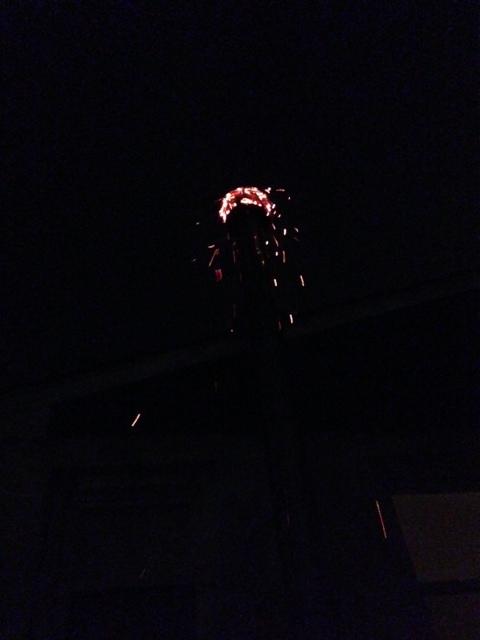FatJay
ArboristSite Member
I got home and threw a few logs on the fire and opened it up to get the temp up. After about 10 minutes I heard creaking and the sound sort of like rain on tin. I went out and looked up at the chimney and saw this:

Spewing fire all over the roof. Paniced I closed the front valve on the fireplace making it air tight, and went out and checked. It had stopped, but I had no idea what had happened, as I just swept the chimney a few weeks ago. So I took off the hood and cleaned the crap off and dropped a rope down after it cooled. Rope went strait down and I tied it to my brush and pulled the brush up and hten back down. Perfectly clean, no buildup. My only guess is I forgot to clean the top of the hood. I cleaned everything up and turned it up again, and there's no problem for now. I'm keeping an eye on it, but it scared the death out of me. Completely disassembled everything from the stove tot he hood, there's not a spot of buildup anywhere. There wasn't any buildup to begin with except a tiny bit on the underside of the top. Never seen anything like that before in my life.

Spewing fire all over the roof. Paniced I closed the front valve on the fireplace making it air tight, and went out and checked. It had stopped, but I had no idea what had happened, as I just swept the chimney a few weeks ago. So I took off the hood and cleaned the crap off and dropped a rope down after it cooled. Rope went strait down and I tied it to my brush and pulled the brush up and hten back down. Perfectly clean, no buildup. My only guess is I forgot to clean the top of the hood. I cleaned everything up and turned it up again, and there's no problem for now. I'm keeping an eye on it, but it scared the death out of me. Completely disassembled everything from the stove tot he hood, there's not a spot of buildup anywhere. There wasn't any buildup to begin with except a tiny bit on the underside of the top. Never seen anything like that before in my life.




